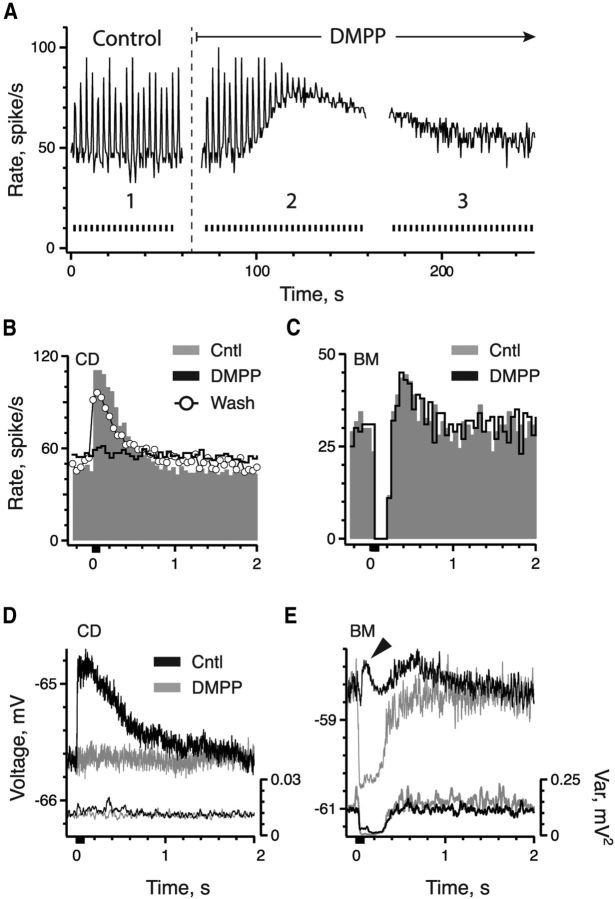Figure 4.
The nAChR agonist DMPP first mimics and then blocks efferent-mediated excitation in CD afferents. A, The excitatory responses of a CD afferent to repeated efferent shock trains (black bars, bottom) are shown as a three-part rate histogram before (1) and during (2, 3) application of 20 μm DMPP. Temporal gaps in graph represent ∼10 s intervals between records. Control solution was superfused during control recordings and DMPP was started at t = 65 s (vertical dashed line) and remained on for the rest of the trace. B, Corresponding average response histograms for control (Cntl) and DMPP were constructed from data shown in segments 1 and 3, respectively. The wash histogram was generated 15 min after returning to control solution (segment not shown). C, Average response histogram of a BM afferent to the standard efferent shock train before and during application of 20 μm DMPP. D, E, Ensemble means (top, left axis in millivolts) and variances (bottom panel, right axis in square millivolts) were acquired from intracellular recordings of a CD and BM afferent in response to the standard efferent shock train before (black traces) and during application of 20 μm DMPP (gray traces), respectively. Arrowhead in E indicates efferent-mediated depolarization presumably mediated by nAChRs on the afferent. In all panels, efferent shock trains (20 shocks at 200/s, black bars) were delivered every 3 s. Ensemble means and variances as well as histograms were based on ≥19 shock train presentations.

